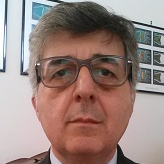Flow Control by Means of Synthetic Jet Actuators
A special issue of Actuators (ISSN 2076-0825).
Deadline for manuscript submissions: closed (20 December 2021) | Viewed by 11057
Special Issue Editor
Interests: thermo-fluid dynamic stability; flow control; synthetic jet actuators; free surface flows
Special Issues, Collections and Topics in MDPI journals
Special Issue Information
Dear Colleagues,
The need for flow control is widely recognized in various fields of technological applications such as fluid dynamics, heat transfer, combustion, atomization, and others. The common goal to be achieved is the maximization of the performance of the engineering systems under design, for both safety and energy consumption reduction purposes. A class of modern active control actuators is clustered under the common term synthetic jet (SJ), meaning that the jet is synthetized within the fluid to be controlled without the use of any traditional pumping device. Piezo-driven and plasma (i.e., spark and dielectric barrier discharge (DBD)) actuators are currently the object of theoretical and experimental investigations. The recent literature has provided a huge amount of contributions related to the basic characterization of such devices, whilst the current ongoing research is devoted to various applications of flow control, addressing specific needs and issues. The aim of the present Special Issue is to collect original papers concerned with the application of various types of SJ actuators to flow control, without any limitation on the specific application field. Theoretical, numerical and experimental contributions are welcome, provided they deal with the interaction between the jet and the external fluid current to be controlled. Modern analysis concerned with POD, DMD, and low order modeling global stability are particularly encouraged, for both numerical and experimental data.
Prof. Luigi de Luca
Guest Editor
Manuscript Submission Information
Manuscripts should be submitted online at www.mdpi.com by registering and logging in to this website. Once you are registered, click here to go to the submission form. Manuscripts can be submitted until the deadline. All submissions that pass pre-check are peer-reviewed. Accepted papers will be published continuously in the journal (as soon as accepted) and will be listed together on the special issue website. Research articles, review articles as well as short communications are invited. For planned papers, a title and short abstract (about 100 words) can be sent to the Editorial Office for announcement on this website.
Submitted manuscripts should not have been published previously, nor be under consideration for publication elsewhere (except conference proceedings papers). All manuscripts are thoroughly refereed through a single-blind peer-review process. A guide for authors and other relevant information for submission of manuscripts is available on the Instructions for Authors page. Actuators is an international peer-reviewed open access monthly journal published by MDPI.
Please visit the Instructions for Authors page before submitting a manuscript. The Article Processing Charge (APC) for publication in this open access journal is 2400 CHF (Swiss Francs). Submitted papers should be well formatted and use good English. Authors may use MDPI's English editing service prior to publication or during author revisions.
Keywords
- Synthetic jet actuator
- Flow control
- Piezo-driven device
- Plasma spark jet device
- Turbulence
- Flow separation
- Heat transfer
- Mixing flow
- Atomization
- Proper orthogonal decomposition (POD)
- Dynamic mode decomposition (DMD)
- Low order modeling (LOM) global stability





